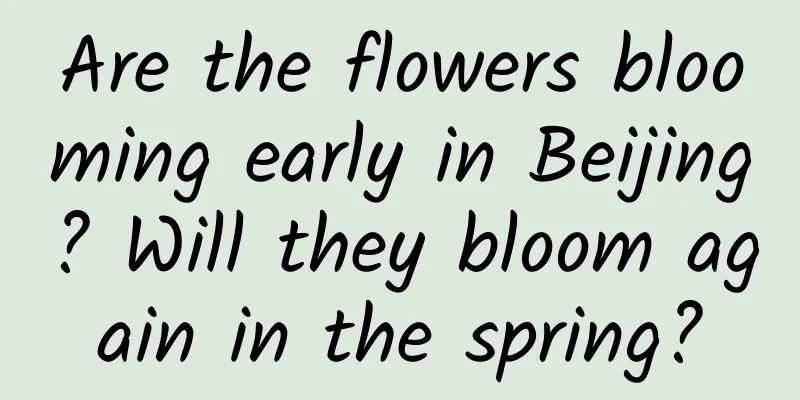I never thought that we would compete with butterflies for food.

|
The "Classic of Mountains and Seas: Great Wilderness Southern Classic" records that outside the southeast sea, between the Gan River, there was a woman named Xihe who gave birth to ten suns. Qu Yuan mentioned the god Xihe many times in his poems, which led later literati to follow suit and write Xihe into their poems. The meaning of Xihe as "mother of the sun" later changed to the sun, the driver for the sun god, the astronomical official, etc., and the gender also changed from female to gender unknown, and then to male. Regardless of the specific meaning, when the word " Xihe " appears, it more or less carries the meaning of the sun or the sun god . For example, the Xihe silk butterfly we are going to introduce today is a butterfly named after the sun. Xihe Silk Butterfly. Image: Notafly / Wikimedia Commons Parnassius apollonius is a butterfly of the family Papilionidae (formerly classified as Papilionidae). Its specific epithet apollonius comes from the ancient Greek word Apollōnía, which is the sun god Apollo in Roman mythology. Logically, it is more appropriate to call it Apollo. However, the Apollo butterfly P. apollo, which is also distributed in China, has already taken the name of Apollo. In order to avoid repetition, the famous entomologist Mr. Zhou Yao gave P. apollonius the clever name "Xihe". Xihe is the sun god in traditional Chinese culture, which echoes Apollo. Apollo butterfly. Image: Sarefo / Wikimedia Commons Red sun and white snow The English name of the silk butterfly is " Snow Apollo ", which highlights the characteristics of silk butterflies: snow-white wings and fiery red spots on the wings like the sun (however, not all silk butterflies have these two characteristics). The Xihe silk butterfly is just like its name: wings like silk, red spots like the sun . There is a circle of black spots near the top of the front and back wings, black antennae, and red spots at the base of the wings. This is the typical feature that distinguishes the Xihe silk butterfly from other silk butterflies. In addition, there are two large black spots and a red spot with a black circle in the middle of the front wings of the Xihe silk butterfly (sometimes all black spots), which looks a bit like a face. The wings of the Xihe butterfly are spread out. Image: Wild Shihezi - Wang Rui In China, the Xihe silk butterfly is distributed in Xinjiang and Tibet, with two subspecies: the nominate subspecies P. apollonius. apollonius and the Tibetan subspecies P. apollonius. kuldschaensis. Abroad, the Xihe silk butterfly can also be seen in various Stan countries and Central Asian regions such as Afghanistan. Many silk butterflies are distributed in high-altitude areas, but the Xihe silk butterfly is different. It can live in relatively low altitudes and often moves at altitudes between 500 and 3,000 meters. The host plants of Xihe silk butterfly larvae are mainly Crassulaceae plants , and sometimes they also feed on Cynanchum genus of Dipsacus family and Salsola genus of Amaranthaceae. Xinjiang has a special geographical environment, with low temperature and drought in winter and spring, and very hot in summer. Many plants will wake up from dormancy when the snow melts in early spring, and seize the time to sprout and grow rapidly. Most of the host plants of Xihe silk butterfly begin to sprout and grow in late March and gradually bloom in May. The Xihe silk butterfly overwinters as eggs, and when the host plant begins to grow, the eggs will quickly hatch into larvae. After about 3 months of continuous feeding and 5 molting, the larvae grow into the final instar larvae, which are large black fleshy worms with a row of small red circles on both sides of the body (in fact, the final instar larvae of many silk butterflies look similar to it). Xihe Silk Butterfly larvae. Image: Wild Shihezi - Wang Rui After eating their last meal, the larvae will crawl into the soil, under rocks and other hidden environments to pupate. In about two weeks, they will be able to emerge as butterflies. The adults of Xinjiang's Xihe silk butterflies often begin to appear in mid-May . The adults play in the flowers, visit flowers to collect nectar, sometimes fluttering, sometimes dancing, looking for mates. Then they mate, lay eggs, and die. The silk butterflies that have completed their reproductive tasks will wither under the flowers and become food or fertilizer for other creatures, while the new eggs are waiting for the test of severe cold to continue the life of a new generation in the early spring of the following year. The survival situation is not optimistic The Apollo Silk Butterfly and the Xihe Silk Butterfly are not only similar in name, but also in appearance, distribution, habits, and diet. The Apollo Silk Butterfly also has white wings and red spots, but it does not have a circle of black spots near the top of its front and back wings, and has more gray and white spots on its wings. It is only distributed in Xinjiang in China, and often lives in subalpine areas at an altitude of 750 to 2,000 meters. Apollo silk butterfly. Image: Wild Shihezi - Wang Rui Due to various reasons such as excessive collection and trade, and occupation of habitats by agriculture, the Apollo silk butterfly has become an endangered species and one of the first insects to be listed in the Convention on International Trade in Endangered Species of Wild Fauna and Flora. China has also included the Apollo silk butterfly in the National List of Key Protected Wildlife, and listed it as a Class II protected animal . Although the Xihe silk butterfly is only listed in the Class III protected animal list in China, its actual situation is not necessarily more optimistic than that of the Apollo silk butterfly . To date, there are still not many people who have taken ecological photos of the Xihe silk butterfly, and the number of its specimens is relatively small. The popular science team "Wild Shihezi" observed the Xihe Silk Butterfly in the wild. Image: Wild Shihezi - Wang Rui In fact, the situation of almost all silk butterflies is not optimistic, and some species have disappeared in some areas. Although China has included all silk butterflies in the list of key protected or "three-protected" animals, it cannot change the increasingly worse situation of silk butterflies. The number of silk butterflies in China is decreasing year by year. The main reason is the destruction of the living environment, and some species are threatened by human capture . The lost beauty of "Silk" There are about 40 known species of silk butterflies in the world, and China has as many as 34 species , accounting for nearly 90% of the world's silk butterfly species. Silk butterflies in China are distributed in both the north and south, but almost all of them are distributed in high-altitude areas. Their host plants are mainly Crassulaceae , followed by Papaveraceae, Aristolochiaceae, etc. One of the food sources for silk butterfly larvae is Pseudosedum sp. Image: Wild Shihezi - Wang Rui In mountainous areas across the country, people dig up Rhodiola rosea plants and sell them for money because of their unproven medicinal effects. The illegal digging is particularly serious in the southwest. Rhodiola rosea is one of the most widely distributed and most abundant Crassulaceae plant groups in high altitude areas. Nowadays, it is difficult to find traces of Rhodiola rosea in many high mountains in the southwest. The food of silk butterflies is being digged by people, which naturally affects the number of silk butterflies. Habitat loss also has a huge impact on the number of silk butterflies. With advanced industrial technology, people can easily cultivate farmland on hillsides and turn grasslands and forests into cities with tall buildings. Activities such as hiking and mountaineering may also have an adverse impact on silk butterflies. After climbing high mountains, if people destroy alpine vegetation at will, climb and dig flowers and trees, they will destroy the living environment of silk butterflies. A specimen of the genus Anaxibia. Image: Anaxibia / Wikimedia Commons The silk butterfly flies very slowly , and it cannot dodge danger quickly like most butterflies. Sometimes, you can even catch a silk butterfly in flight with your hands. This way of flying makes them easy predators and easy to be captured by people. The silk butterfly's wings are as silky in texture, which is very unique among butterflies and is very popular. It often grows in high altitude areas, is relatively rare, and specimens are relatively difficult to collect. This also makes them a favorite of collectors . Many butterfly lovers around the world go to high mountain areas such as Central Asia to collect silk butterflies, so capture and trade have become a major threat to their survival. In 2016, the Wild Shihezi team launched an initiative to prevent the habitat of the Xihe butterfly in the Manas River Valley from being accidentally damaged by greening activities, and ultimately succeeded in protecting the habitat. Image: Wild Shihezi - Wang Rui This season is the birth season of Xihe silk butterflies. I hope they will continue to fly and roam in unknown places and survive for generations. Author of this article: Jian Yiling |
<<: Don’t buy the fruit slices sold at the roadside for 15 yuan a box!
Recommend
New media operations content competitor analysis skills!
In ancient times, when marching and fighting, the...
Analysis of WeChat Reading Products
WeChat Reading, with its positioning of social + ...
Shenzhou 17 is about to set off! Reviewing the "Shenzhou" series and paying tribute to China's space program
The China Manned Space Engineering Office learned...
Boss Shen’s live streaming sales operation, refined operation of “people, goods and venues” in the live streaming room with sales of millions
Mr. Shen’s live streaming operation, sales of mil...
Product Operation: How to acquire new users?
Inviting friends means letting old users invite n...
Xiaohongshu agent operation: After operating Xiaohongshu for 2 years, I have summarized these experiences!
Xiaohongshu is a cross-border e-commerce platform...
Why do earthquakes occur frequently in Sichuan?
Yesterday, a magnitude 6.8 earthquake occurred in...
Advanced Operations: 13 Core Thinking Points for Product Operations
Product operation is basically a general term for...
The higher the alcohol concentration, the better the disinfection effect? This statement is really wrong!
When it comes to medical alcohol, everyone is fam...
Adapting ATS from server to iOS client
iOS 9 has been released, and everyone has to expe...
How to create an app with tens of millions of users?
In the era of "users are king", owning a...
Wireless is better than wired. Can Sony MDR-EX750BT and NW-A25 produce super CD sound quality?
Electronic device enthusiasts have long been seek...
Analysis from a big company! Advantages and difficulties of the three positions of UI, interaction and product manager
Many readers want to switch from UI to interactio...
The latest news on Zhengzhou lockdown in 2022: What are the specific lockdown areas? When will the blockade be lifted?
During the May Day holiday, five staff members we...
Is IP marketing a powerful tool for brands to break through?
The summer of 2017 may become a turning point in ...









